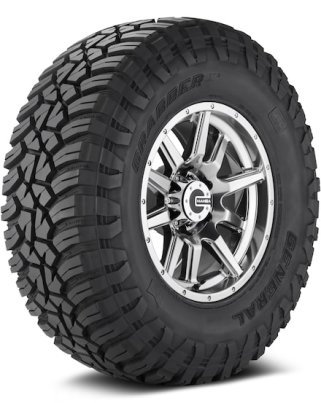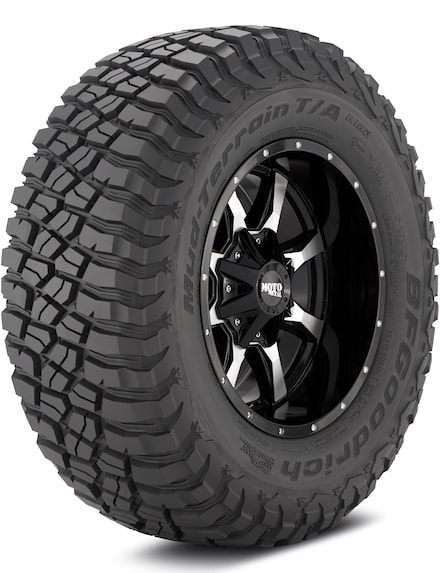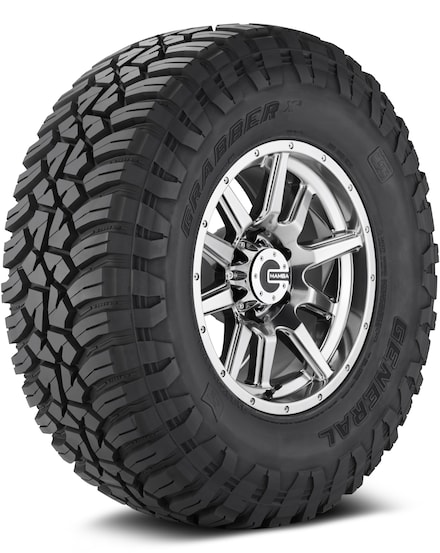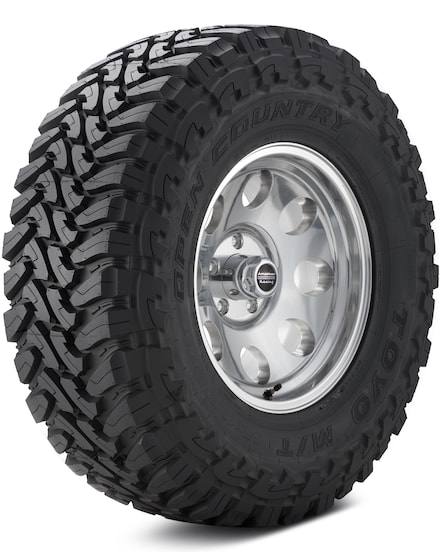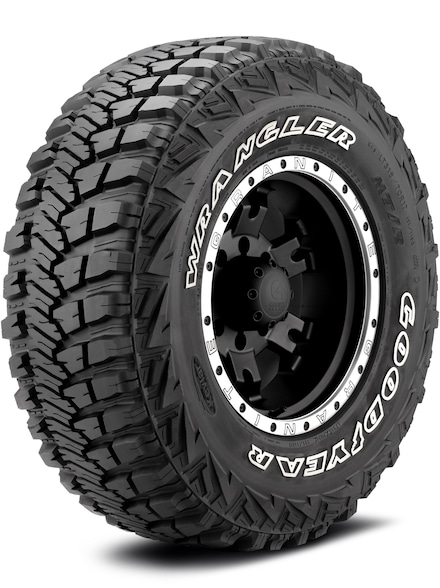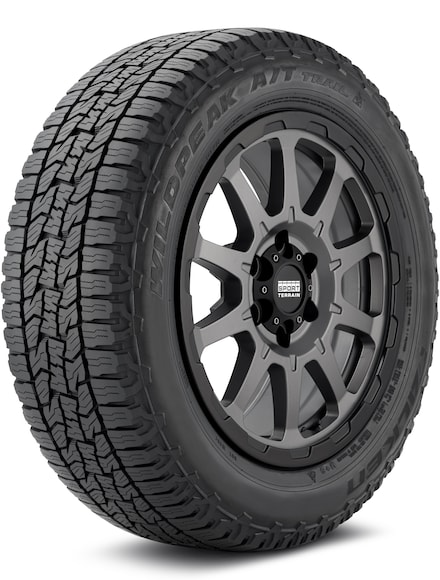We may earn revenue from the products available on this page and participate in affiliate programs. Learn more ›
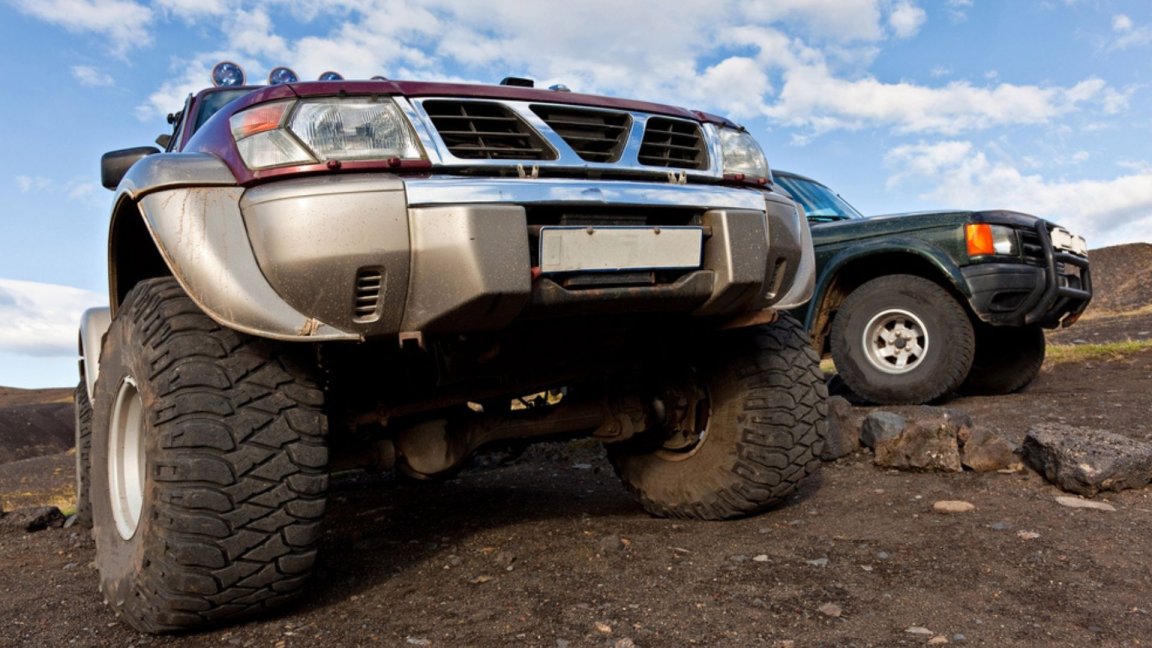
If you enjoy off-roading, you need a good set of tires. The best mud terrain tires have big, chunky tread patterns that allow you to plow through deep mud or snow, and even scramble over some rocks. Our buying guide will help you select the best mudding tires for your truck, Jeep, or SUV.
“Mud tires” just sounds epic to say, doesn’t it? Who doesn’t want a set of angry, crush-anything-in-your-path tires to tear up the trails in the nearby backwoods? One of the most versatile species of tires, mud terrain tires, or simply “mud tires,” are a hyper-aggressive breed suited to catering to all your post-apocalyptic overland fantasies. There’s plenty to choose from, so it’s important to make the right decision for you. Fortunately, we can help with that.
Enter The Drive’s buyer’s guide to the best mud tires for your next journey down the roads less traveled. It can be hard to jump on that perfect pick simply by browsing the parking lot at your local Bass Pro Shops, but we have you covered. Our blend of personal knowledge, customer feedback, and professional assessments have allowed us to curate this tool to walk you through a crowded and colorful market. So take a peek and happy shopping!
Summary List
- Best Overall: BFGoodrich Mud-Terrain T/A KM3
- Best Value: General Grabber X3
- Honorable Mention: Toyo Open Country M/T
- Best Winter-Capable Mud Tire: Firestone Destination M/T2
- Best for Smaller Trucks/SUVs: Goodyear Wrangler MT/R With Kevlar
- Best For Rally-Style Passenger Cars: Falken Wildpeak A/T Trail
Our Methodology
The Drive will always strive to deliver informative, honest takes but we understand it’s not always feasible to source every tire to test in every condition. That’s why we work hard to pair thorough research with our real-life experiences to deliver concise takes. Beyond that, expert opinions and consumer reviews alike from tire geek encyclopedias such as Discount Tire continuously expand our knowledge with objective test results and real-world ownership stories. Only tires with extensive reported use across a plethora of conditions will be taken into consideration as we strongly prefer those with a trusted history to one day grace your adventure vehicle. For more details on how we compose our buyer’s guides and product reviews, you can check out this link.
Best Mud Tires Reviews & Recommendations
Best Overall
BFGoodrich Mud-Terrain T/A KM3
See ItPros
- Wonderfully rounded hero
- Good steering feel and response
- Admirable on-road refinement
- Tough-as-nails construction
Cons
- Ho-hum snow traction
- Slightly lags behind rivals on wet roads
Best Value
General Grabber X3
See ItPros
- Strong pricepoint
- Strong overall off-road performance
- Class-leading wet traction
- Decent winter traction
Cons
- One of the noisier choices
- Tendency to vibrate with difficulties balancing
- Somewhat loose steering feel
Honorable Mention
Toyo Open Country M/T
See ItPros
- Reportedly easy to balance
- Great highway manners
- Well-rounded off-road performance
- Reportedly long tread life
Cons
- More prone to cracking in harsh weather
- Not the best traction in deep mud
- Extremely limited sizes
Best Winter-Capable Mud Tire
Firestone Destination M/T2
See ItPros
- Stellar value
- Class-leading winter traction
- Reportedly long tread life
- Good steering feel and response
Cons
- Somewhat firm ride
- More noticeable road noise
- Not as refined or grippy on pavement
Best For Smaller Trucks/SUVs
Goodyear Wrangler MT/R With Kevlar
See ItPros
- Broad size range for smaller wheels
- Stellar off-road abilities especially in mud
- Strong construction
- Distinctive looks
Cons
- Stiff ride
- Noisier than others
Best For Rally-Style Passenger Cars
Falken Wildpeak A/T Trail
See ItPros
- Best road manners here
- Commendable off-road traction even for this list
- Among the lowest-priced options
- Winter-rated (3PMSF)
Cons
- Not a true mud bogger
- Sized mainly for cars, crossovers, and small SUVs
Our Verdict on the Best Mud Tires
And that wraps up our list of apocalypse-ready rubber. The BFGoodrich Mud-Terrain T/A KM3 scores Best Overall for bulletproof construction, refined road manners, and generally strong off-road abilities. The General Grabber X3 slips in at Best Value for putting up a stiff fight against premium brands plus a little added extra at a relative bargain. Toyo’s Open Country M/T is an Honorable Mention worth considering for its long life, road manners, and proven capabilities.
FAQs
You’ve got questions. The Drive has answers.
A: It depends, but you generally shouldn’t. In fact, mud tires can often be worse in the snow than all-terrains as their thick tread blocks can easily clog with snow. Their tough rubber compounds are susceptible to hardening, and they often lack the siping to evacuate moisture and grab at the snow.
A: It depends, but you generally shouldn’t. In fact, mud tires can often be worse in the snow than all-terrains as their thick tread blocks can easily clog with snow. Their tough rubber compounds are susceptible to hardening, and they often lack the siping to evacuate moisture and grab at the snow.
A: Due to their aggressive tread patterns and presumably abusive lifestyles, expect most mud tires to safely last between 30,000 to 50,000 miles, depending on use case and vehicle. More resilient models can go upwards of 50,000 to 70,000 miles, but always monitor your own tires’ wear and change accordingly.
A: Yes, you absolutely can. How much you can is a matter of load range. Which tires are the best? We can’t necessarily say as load range and max air pressure can vary down to the size of tire selected, and figures can fluctuate by hundreds of pounds and tens of PSI within a single range.
A: Mud tires will often ring the counter at higher price tags due to the technologies employed and the vast amount of material poured into each tire. Models at the lower end of the price spectrum in their smallest sizes will hover around $900 to $1,100 for a set of four or roughly $225 to $275 per tire. At the premium end with beefier fitments, expect to see prices range between $1,300 to over $1,700 for a set. The General Grabber X3, our Best Value pick can be sourced for anywhere between $1,100 to $1,500 when looking at various sizes of 33-inch and 35-inch tires.
A: Like any tire focused on specific disciplines, there are plenty of variables that affect how well it carries out the tasks on its to-do list. Nearly all mud tires share a common goal and often fall under a single classification, but some may be friendlier highway cruisers while others can be especially talented in mud or snow. Tread patterns can alter the perceived road noise while bulletproof sidewalls could knock a few fillings out. There are many tidbits to a mud tire that contribute to the overall experience, so here are a few things worth looking into.

